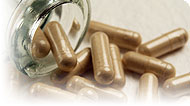Search Healthnotes
Colloidal Silver

Side Effects
When taken in low amounts (e.g., 50 mcg daily), the body appears able to efficiently excrete silver. However, any silver the body is unable to excrete accumulates in body tissues and can result in argyria—the depositing of silver in the internal organs, tissues, and skin.1 Argyria causes the skin to turn gray or bluish gray and to turn dark on exposure to strong sunlight. This discoloration is permanent and there is no known effective treatment for it. In addition to argyria, the intake of very large amounts (far in excess of the amount that causes discoloration of the skin) of silver can cause neurological and organ damage and atherosclerosis.
The estimated amount of silver accumulation over a one-year period that is required to produce argyria is 1 to 6 grams. This amount is very large compared to the 50 mcg typically recommended and consumed by people using OTC colloidal silver products. Using the most conservative figure, 1,000 mg (1 gram) of silver corresponds to the silver content in 100 liters of 10 ppm colloidal silver, 50 liters of 20 PPM colloidal silver, or 33.3 liters of 30 PPM colloidal silver.
Copyright © 2024 TraceGains, Inc. All rights reserved.
Learn more about TraceGains, the company.
The information presented by TraceGains is for informational purposes only. It is based on scientific studies (human, animal, or in vitro), clinical experience, or traditional usage as cited in each article. The results reported may not necessarily occur in all individuals. Self-treatment is not recommended for life-threatening conditions that require medical treatment under a doctor's care. For many of the conditions discussed, treatment with prescription or over the counter medication is also available. Consult your doctor, practitioner, and/or pharmacist for any health problem and before using any supplements or before making any changes in prescribed medications. Information expires December 2024.











